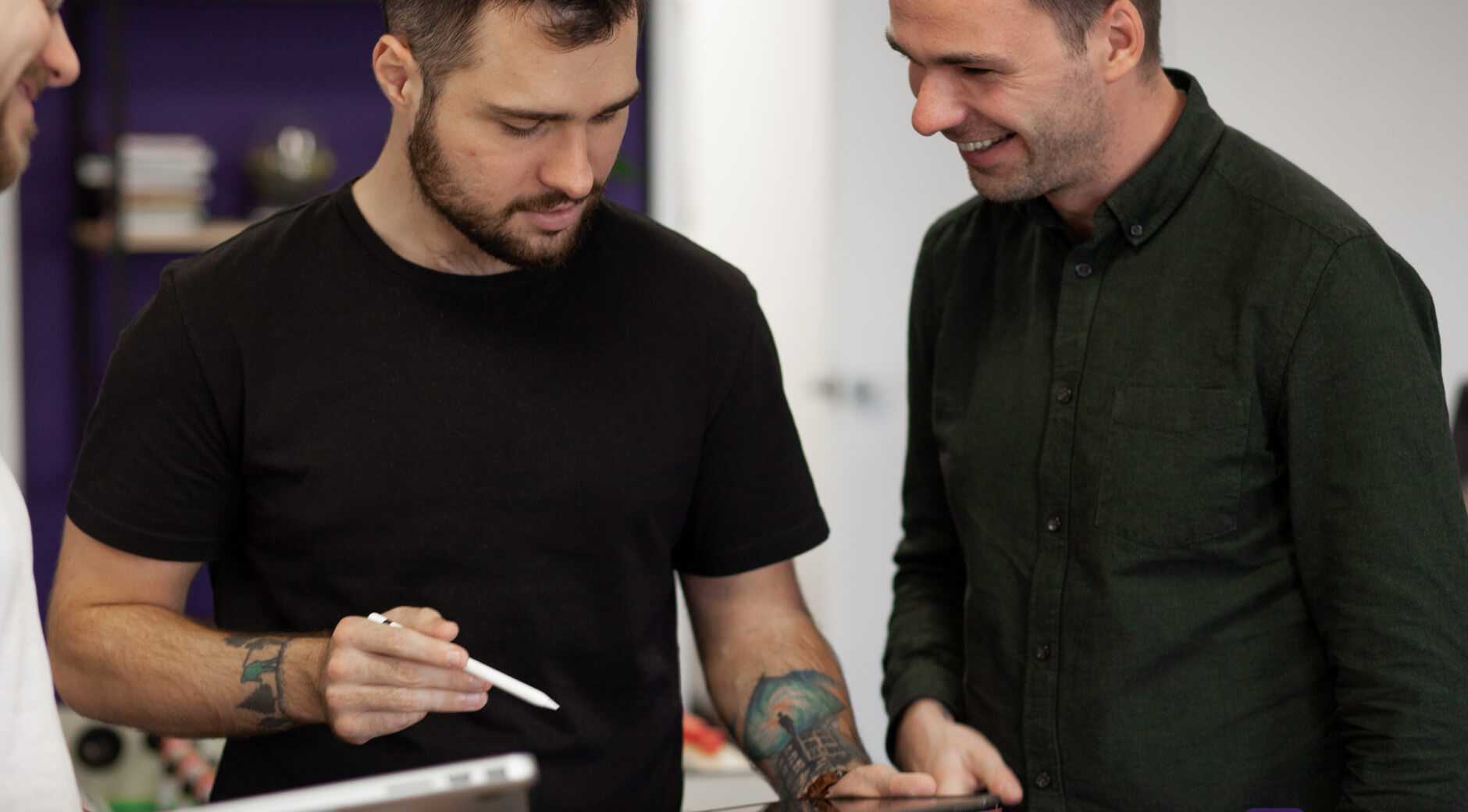От халепа... Ця сторінка ще не має українського перекладу, але ми вже над цим працюємо!

The 8 startup tips you need as a young founder. Thank us later

Vasyl Khmil
/
CTO
8 min read
We know that look: you’ve got a startup idea. A grand one. It’s technical, it’s new, it’s disruptive, and, quite frankly, it’s scary. Believe us: it’s totally fine to get cold feet when you want to do something right from the start and get maximum value with your, let’s say, modest budget. At NERDZ LAB, we know this from our experience of software development for startups and building products of our own.
That’s why we’re offering our expertise, nay, friendly advice on how to launch your startup and make sure it sticks. NERDZ LAB isn’t only a vendor; we’re also partners and consultants for dozens of founders that entrusted their startup product development to us. Believe it or not, we’ve witnessed many startup successes and failures, seen the mistakes they made and learned to avoid them.
We know your pains and are willing to help. So take out your notebooks and start jotting down our tips on how to launch a successful startup on a budget.
Article content:

1. Validate the idea against the market
Stop and ask yourself: will the world around you and the people in it actually benefit from your idea?
This step seems obvious, and yet many startups are created just because the founder needed something, thought it was a terrific idea, and got someone to pay for implementing it. At least this is the only way we can justify that 34% of products fail because of the lack of product-market fit.
Remember that if you benefit from your brilliant idea, it doesn’t mean everyone else will. The market is real; it’s harsh and demanding. Your product needs to fit into the market, and that means finding the pain points not only you but many others suffer from.
2. Focus on the critical part
If you have a limited budget (and who doesn’t?), you can’t afford to do everything at once, stuffing as much as you can into the perfect final version. And why should you? Focusing on the critical things and functions most of your users will enjoy is a far better idea.
Start with MVP product development. If you don’t know, MVP stands for a minimum viable product, and its idea is to give initial users just enough functionality for feedback. It’s sort of like developing a bike before you develop a moto bike. An MVP is much cheaper and faster to deliver than aiming for a finished product from the start.

Check out our MVP development services >
Our advice is to use the time and money you’ll save from MVP software development to find an investor or start a marketing campaign. After all, 22% of startups fail because of marketing problems.
Remember the Pareto Principle? You know, the 80/20 rule that teaches you to prioritize the critical features. Use it in your startup product development. Say, if your idea is a marketplace app that connects users and vendors offering services, your critical functionality would include a list of services and the ability to purchase them. That’s your 80. Now, the additional features like order tracking, notifications, package deals – those aren’t critical because the marketplace will work even without them. They’re your 20. So focus on your 80 because it has the highest effort/effect ratio.

3. Prioritize, for the love of god
Once we’ve mentioned priorities, we should also tell how important prioritizing work is: extremely. It’s critical to not try and do everything at once. Give every task a priority and don’t neglect that order.
Let’s get back to our marketplace app example. Here’s what should be of the highest priority in its development:
- Product validation using a simple landing page just to see if people are interested
- A read-only list of services (it’ll do for starters)
- User registration (for tracking users and connecting data to them)
- The ability to purchase services
- Vendor registration
- Read-only information for vendors about the purchases
After you’re done with these highest-priority features, the development can be frozen until the product is released on the market.

4. Don’t hold off your releases till the end
It may be tempting to bet everything on the one final release you’re hoping will be perfect and users will love. Sadly, it doesn’t happen very often. Who knows what may happen while you’re preparing for it. Remember that world-class startups have shifted their business vector after initial release, and it made them successful.
Our tip is to make smaller releases, at least at the beginning, since they give you the flexibility and swift feedback you’ll need to grow in the right direction. For example, the bullet points from the previous tip can all be released separately, giving you the opportunity to communicate with your market faster and understand it better.
5. Don’t be afraid to mess up
It’s hard to believe, but being free to fail feels much better than trying to do something perfectly. Many startups are afraid to mess up, aiming for perfection just like the world-renowned companies they worship.
But the big names they’re idolizing weren’t made in a day. Each of them has years of failures followed by success behind their shoulders. Plus, their solutions can only seem easy and breezy while, in reality, they’re a complicated interconnection of functions coupled with some first-class marketing.
Neither a perfect product nor money should be your goals at the beginning. But you know what should? Understanding your market and its needs. Even if 500 of your first 1,000 users are dissatisfied, they will give you an immense understanding of what’s wrong. And once you fix those issues, the next 10,000 satisfied users will love what you did.
6. Analysis is your friend
By all means, analyze the feedback and actions of your users, otherwise, you won’t be able to tell what they like and dislike about your product or if they even enjoy it. How can you move forward or decide what needs to be altered if you don’t know the direction?
But with analytics integrated into your product, you’ll be able to tell how many people use your product, how often, and for how long. You’ll discover how users navigate your app and at what points they quit. You’ll also be able to analyze the conversion rate and how much one client costs – information that’s more than interesting for investors.

7. It doesn’t end with the final release
Sure, MVP development is an important phase, but it’s not the only pillar holding your startup. Marketing is another one.
Your product isn’t worth anything until people start using and talking about it. So be ready to invest in sales and marketing — about 11.7% of your total budget, according to Deloitte. It can come in ads, paid partnerships, or content marketing. Just make sure there’s a marketing professional on your team, devising strategies and managing these activities.
8. Stay thrifty
Before you discover that your idea is actually successful or while you’re still investing your own money in it, you must find ways to cut spendings. Here are some ideas:
Start with a landing page
If you’re a B2C startup, don’t start the development without validating your idea through a landing page first. Spend a couple of days creating an appealing landing page in a website builder, attract traffic to it, and you’ll see how many people will sign up for news about your product. If the number of subscribers exceeds 20%, you’re good to go. Initiate the development!
Register users with social media
If your idea requires user registration, start with registering through social media accounts. It takes four times faster to set up and doesn’t need additional functions like “forgot password” or resetting it.
Use out-of-the-box solutions and services
Sometimes, it’s best to purchase an off-the-shelf solution for your needs, saving you time and money on developing a similar solution yourself. For instance, the Stripe payment gateway works at a low fee of 3% of a payment, and its integration is much quicker and more straightforward than building a payment gateway from scratch.
Or you can use SendBird and Zoom for real-time messaging and video calls. You’ll substitute these tools with the ones you’ve developed yourself later, when you have the time and resources.
Go for existing solutions for admin panels
At NERDZ LAB, we use Laravel Nova to create admin panels in a matter of days. All it requires is some time from a back-end developer and $100 from your budget.
If you can get a tool or service for free, get it
Even if they aren’t completely free, many services have a pro-bono limit on the number of users or functions. For instance, Zoom Video gives 10,000 minutes a month at no additional cost. You can also apply on a list of startup programs to gain free services (AWS, SendBird, Mixpanel, etc). This is great for startups since you won’t have that many clients at the beginning, and using these services will be extremely cost-effective.
Or choose a pay-as-you-go one
If you can’t find a free service, pay-as-you-go is your next best option. Even if it turns out to be more expensive, just remember you’re still at the start of your startup journey, so it’s easy to change what stopped working and find another solution.
Hire a designer – that’s a must
Have you thought about design thinking? An experienced designer will build the UI/UX design for your startup, so the developers will focus on actual development, not the UI or animations.
Don’t be afraid of manual work
Automation is expensive, so when you’re starting out, it’s okay to do some things manually. Like in the marketplace example we mentioned earlier, it’s okay to manually add services to the platform if it’s quicker and easier to do.
Contact software vendors focused on helping startups
If you decide to implement your idea with the help of a software development company, make sure it has relevant experience and offers software development services for startups. When a vendor is focused on helping startups start and grow, it definitely has some practical cost-cutting tricks up its sleeve. Maybe, it’s already using some solutions you’ll need, and you won’t have to pay extra for them.

The bottom line
We understand your passion for developing a high-quality app that will be successfully launched throughout marketplaces and loved by the users. We’ve been there with our own products and have supported our clients with custom software development services for startups.
That’s how we learned these hands-on tips for startup founders. We truly hope they’ll help you launch your startup and scale-up if/when you need it. And if you decide outsourcing software development is the way to go for your product, NERDZ LAB will be glad to help. Contact us for a project estimate or consultation.




